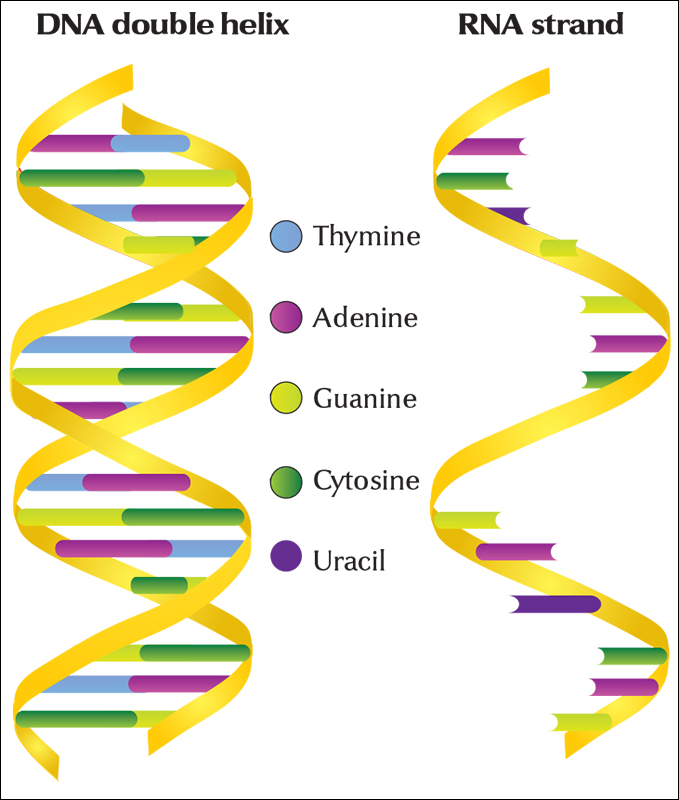RNA, also known as ribonucleic acid, is a complex molecule that plays a major role in all living cells. RNA molecules help produce substances called proteins. Proteins are chains of smaller organic molecules known as amino acids. The body uses proteins to build cells and to carry out the cells’ work.
RNA is similar in structure to DNA (deoxyribonucleic acid), another important molecule found in cells. Like DNA, all RNA molecules contain hundreds of smaller chemical units called nucleotides. These nucleotides are bonded together chemically to form thin, chainlike molecules called polynucleotides. Unlike DNA, each RNA molecule consists of a single polynucleotide chain. A DNA molecule has two chains. In addition, RNA occurs throughout the cell, while DNA is found mainly in the cell’s nucleus.
RNA nucleotides contain a compound called a phosphate, a sugar called ribose, and a compound called a base. The phosphate and sugar are the same in all RNA nucleotides, but the bases vary. There are four RNA bases: (1) adenine, (2) guanine, (3) cytosine, and (4) uracil.

Different types of RNA perform different jobs. One type, known as messenger RNA or mRNA, copies chemical instructions from DNA for making proteins. The mRNA then leaves the nucleus and carries the instructions to protein-making cell structures called ribosomes. These instructions tell the cell how to put amino acids together in the right order to make a specific protein. Some RNA molecules act as enzymes to speed up certain chemical reactions.
Another type of RNA is called transfer RNA or tRNA. A tRNA molecule collects amino acids and brings them to the ribosome. A third type of RNA, ribosomal RNA or rRNA, is an important physical component of ribosomes.
